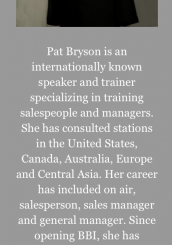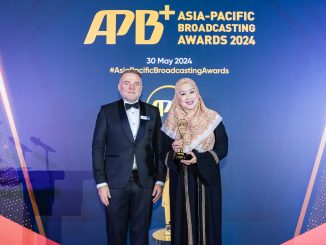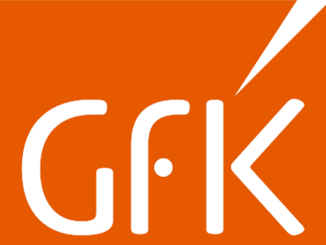
Can your prospect say “Yes”?
Selling Radio Direct with Pat BrysonIn working with my salespeople, I often hear, “The presentation went well but my client must take it to…(fill in the blank)”. One thing’s for certain, if we don’t have Mr. or Ms. Big in the room when we present, most of the time we won’t close the agreement. In fact, I think 85-90% of the time when we don’t close business it’s because we are talking to the person who can say, “No” but can’t say, “Yes”. That’s the person I call Mr. or Ms. Not-So-Big. It is common for businesses today to have multiple decision-makers or ultimate decision-makers in another geographic location. Getting to the “Yes” person can be difficult.Obviously, we must try to get Mr. Big involved at the earliest possible time. But what if we CAN’T get to Mr. Big? What do we do? There are several avenues we can employ with Mr. Not-So-Big to increase our chances of getting the sale.
First and most obvious, we can try to get Mr. Not-So-Big to arrange a meeting with Mr. Big. Ideally, that would be in the Phase Two Customer Needs Analysis meeting. Failing that, he needs to be in the presentation meeting. That can’t happen? Now what?
We can find out just how “sold” Mr. Not-So-Big is on our proposal by asking him, “On a scale of 1 to 10, 1 being you don’t like it at all and 10 being you have to buy it now, how sold are you on our solution?” He needs to be a 10+, completely sold on the proposal, or he probably can’t “sell it up” to his boss. Remember, if HE pushes our recommendation, and ultimately the boss buys it but then feels it didn’t work, Mr. Not-So-Big gets the blame. No one will risk their job to sell our programs!We can also ask Mr. Not-So-Big to authorize the agreement “contingent on” the approval of Mr. Big. This is another way to test his commitment.If he won’t sign the agreement, you can ask if he’ll write on the proposal, “This looks good to me. I think we should do it.”Another technique is to rehearse Mr. Not-So-Big for his meeting with Mr. Big. “Do you think Mr. Big will have questions about this campaign? What do you think they might be? How will you answer these questions?” In other words, you rehearse his answers with him to these possible objections.As you go through this process you’ll get a feeling about how likely it will be for Mr. Not-So-Big to be able to sell this to his boss. No one can sell our campaigns like we can, but sometimes Mr. Not-So-Big has to serve as our proxy. Get him ready to carry your message forward.Happy Selling!Main Pic: Shutterstock […]





